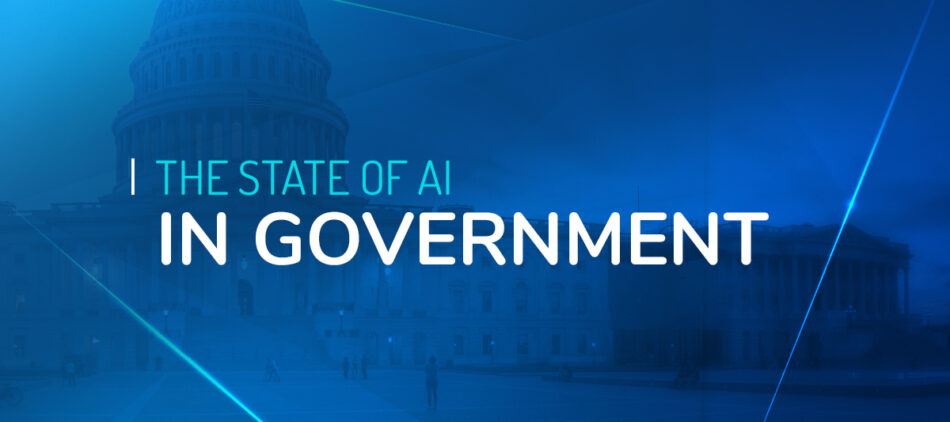
AI is Revolutionizing How Government Operates
Artificial intelligence is poised to be the new power tool that allows government agencies to serve the people better.
At Veritone’s CES keynote on AI deployment and integration strategies in government earlier this year, we imagined a path toward enabling flexible and secure AI deployments at scale for government agencies. Now that COVID-19 has upended regular government operations and demanded agencies to adapt to a new world, it’s critical we keep this conversation going.
Like any good conversation, we need to start with a review of the data behind AI use in the public sector.
2020: A Snapshot of AI in Government
While the mass adoption of AI by government entities may be years away, surveys of early adopters highlight the potential for AI to revolutionize the public sector. Despite the complexity of data sovereignty, and the security and bias concerns associated with AI, a snapshot of statistics collected within the last year shows incredible promise.
The basics: While 45% of the public sector is in the early phase of AI adoption — lagging behind every other sector surveyed — early adopters of AI in government are quickly realizing the benefits. According to a Deloitte survey, 33% of government agencies that have adopted AI believe the tech will be very important to their success over the next 2 years.
Where and how AI is deployed: The top three deployment targets for AI in the public sector are quality control (47% of respondents), workforce management (38%) and cybersecurity (38%). Of the early adopters, more than half (52%) partnered or plan to partner with a professional services firm for AI integration, and 60% lean toward adopting enterprise software with integrated AI.
Early outcomes: 31% of agencies have freed up workers through AI-powered automation, and more than half (55%) say their investment in AI will increase 10% in the next fiscal year. About 64% of government agencies believe the technology will reduce repetitive tasks for workers in the coming years.
Potential stumbling blocks: The public sector is the most wary industry of the ethical risks that come with AI technology (31% of government leaders fear the tech could be used nefariously), and 51% are concerned about risks to cybersecurity through AI. Additionally, oversight needs to improve — 11% of government agencies currently using AI admit to checking AI outputs only a few times a year, if at all.
Human-centered applications: As we noted at CES, there has been a human at the center of every AI system and loop we’ve helped deploy in government. But the numbers show that AI can be good for humanity as a whole when it’s implemented in the public sector. According to McKinsey, AI can help accomplish all 17 of the UN’s global sustainability goals through 135 distinct applications.
At Veritone, we take a pragmatic approach to AI delivering solutions for the public safety and justice sectors built on our scalable, future-proof AI platform, aiWARE. aiWARE Government is FedRAMP authorized and allows for organizations to not only leverage turnkey applications, but also develop custom AI applications, deploy bespoke cognitive models or enhance existing systems, processes or third-party applications via APIs or low-code workflow tools. Leveraging one, multi-AI platform allows for easy data sharing across applications resulting in unprecedented processing speed and efficiency gains.
Ready to take advantage of the momentum of AI in government and the public sector? Browse our offerings or contact us to schedule a demo.
Further Reading
The Power of Artificial Intelligence for Government Agencies